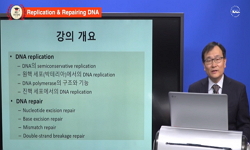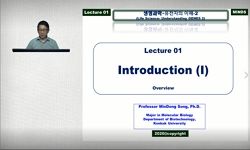DNA repair is a pivotal mechanism in maintaining genetic integrity and cell fate determination. As unrepaired DNA lesions inhibit transcription, UV-induced damage to transcribed DNA is repaired preferentially versus non-transcribed DNA through transcr...
http://chineseinput.net/에서 pinyin(병음)방식으로 중국어를 변환할 수 있습니다.
변환된 중국어를 복사하여 사용하시면 됩니다.
- 中文 을 입력하시려면 zhongwen을 입력하시고 space를누르시면됩니다.
- 北京 을 입력하시려면 beijing을 입력하시고 space를 누르시면 됩니다.
https://www.riss.kr/link?id=A107655259
- 저자
- 발행기관
- 학술지명
- 권호사항
-
발행연도
2013
-
작성언어
English
- 주제어
-
등재정보
SCIE,KCI등재,SCOPUS
-
자료형태
학술저널
-
수록면
37-43(7쪽)
- 제공처
-
0
상세조회 -
0
다운로드
부가정보
다국어 초록 (Multilingual Abstract)
DNA repair is a pivotal mechanism in maintaining genetic integrity and cell fate determination. As unrepaired DNA lesions inhibit transcription, UV-induced damage to transcribed DNA is repaired preferentially versus non-transcribed DNA through transcription-coupled nucleotide excision repair (TCR). Previously, we reported that TCR-related genes serve as transcription elongation factors, and defects of the genes drastically increase mutagenesis. Extensive studies on DNA damage repair have provided key information about the pathways controlling replication across DNA lesions. However, knowledge of the mechanisms dealing with stalled DNA transcription is insufficient. In this study, we demonstrated the requirement for SPT4 in cell growth along with its role in mutagenesis in both the presence and absence of DNA damage. SPT4 appeared to promote transcription elongation across DNA lesions, thereby increasing the cell survival rate in exchange for increased mutagenesis. Further, our results explain the decrease in mutant Huntingtin protein in neuronal cells upon inhibition of Supt4, the mammalian ortholog of yeast Spt4p.
동일학술지(권/호) 다른 논문
-
- 대한독성유전단백체학회
- Yang, Hana
- 2013
- SCIE,KCI등재,SCOPUS
-
No association of LCT-13910 single nucleotide polymorphism with gastroenteritis in Korean children
- 대한독성유전단백체학회
- Choi, Byung Joon
- 2013
- SCIE,KCI등재,SCOPUS
-
- 대한독성유전단백체학회
- Kang, Byeong-Chul
- 2013
- SCIE,KCI등재,SCOPUS







 ScienceON
ScienceON





